Tutorial 1 covers in detail steps that are glossed over in this tutorial.
Looking at available layouts there are 2 that offer replication - 2S4T and 4S2T:

2S4T: Entire plate coated with the same target, samples in duplicate. Note that sample replicates are in the same row.
4S2T: Each sample tested in duplicate on 2 targets. Note that target replicates are in the same column. (see tutorial 3 )
Following tutorial 1 I will rearray the 10 plates of PS-6 into a new plate set applying the 2S4T layout. 10 96 well plates in duplicate will requires 5 384 well plates:
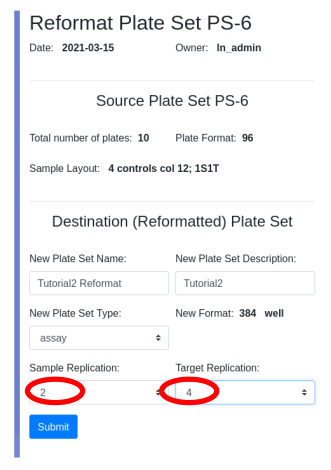
Submit and confirm on the next screen. Note that selections made in the sample replication dropdown limit the options available under target layout - in this case only the default is available. View the target layout for a discussion on optional target layouts, which are only used for data annotation.
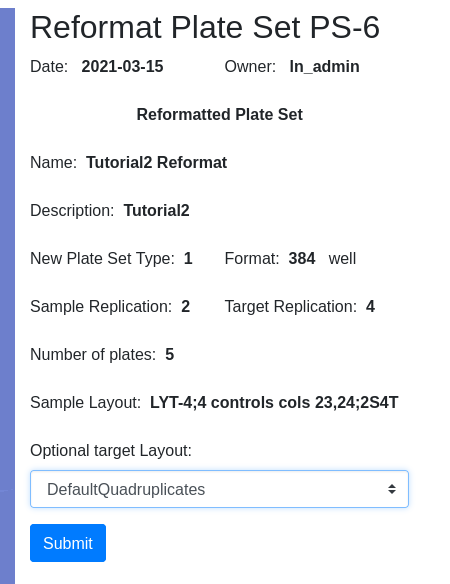
Click submit to create the new plate set PS-10. Select and assaociate data with the plate set. Use the data file plates384x5_2S4T.txt which contains demonstration data for 5 384 well plates. The data has been generated such that replicates are side by side in the same row and are +/-10% of each other. In the graph below replicates for one plate are color coded and appear at the same X value:

Looking at the response trellised by plate and colored by sample type:
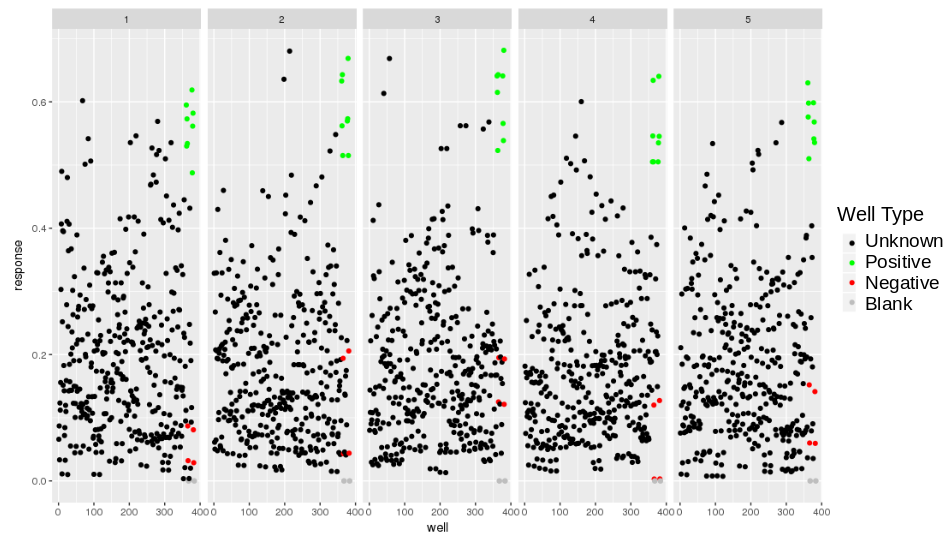
Associate the data with the plate set:
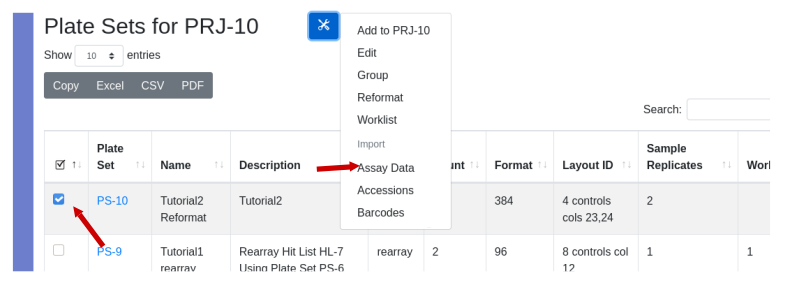
Select the file:
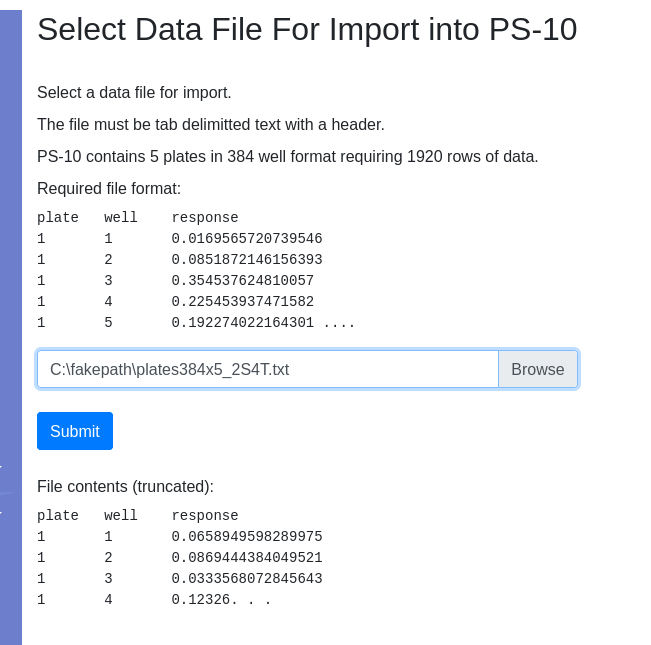
Fill in the required information. Note that I am auto-selecting hits (all samples with a response greater than 3 standard deviations fromt the mean of the negative controls) which activates the hit list name and description text boxes. I did not choose to select the Top N hits so the box where I would enter N remains disabled.
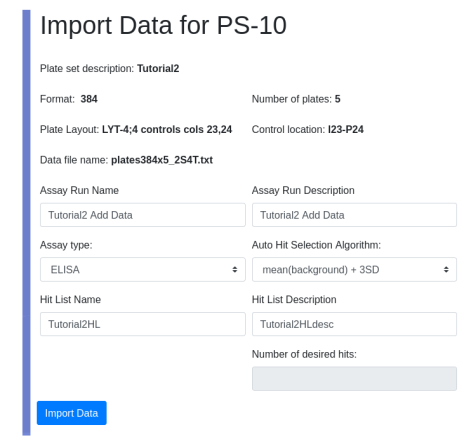
Click import and after a few seconds you are taken to the ‘Plates for PS-10’ page where you can scroll down and see the new assay run and hit list:

Click on the AR-7 link to see a plot of the data. Note that the associated hit list HL-8 has 155 hits.
Responses are plotted in decreasing order with controls color coded. Not that if you select normalized response with a hit threshold set to mean(background)+/-3SD, 155 hits will be identified. The hit list could have been created here, but was already auto-generated on import.

Looking at the hit list view you can see that PS-6, 96 well plates contain all 155 hits that can be rearrayed into two 96 well plates.
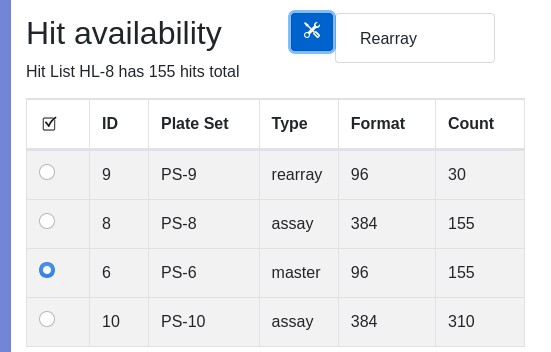
Once rearrying is complete, creating PS-11, that plate set is annotated with a worklist indicating that it was generated by a rearray activity. The worklist can be used to physically rearray the samples into the new plate set PS-11.
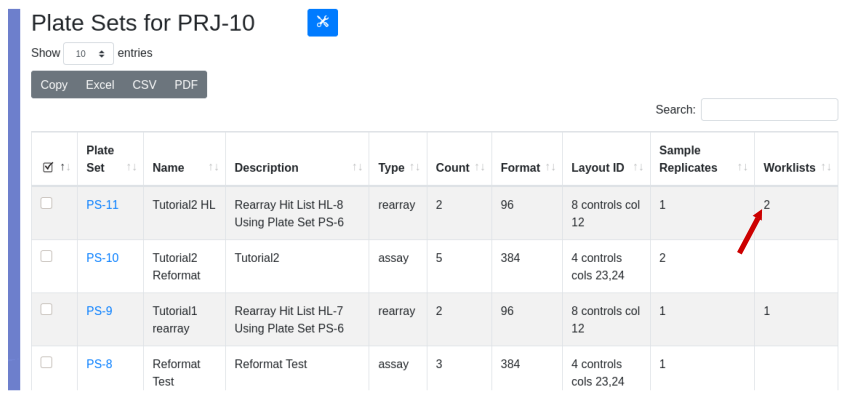
Tutorial 3 prepares a target layout for the Tutorial 4 discussion on target replication.